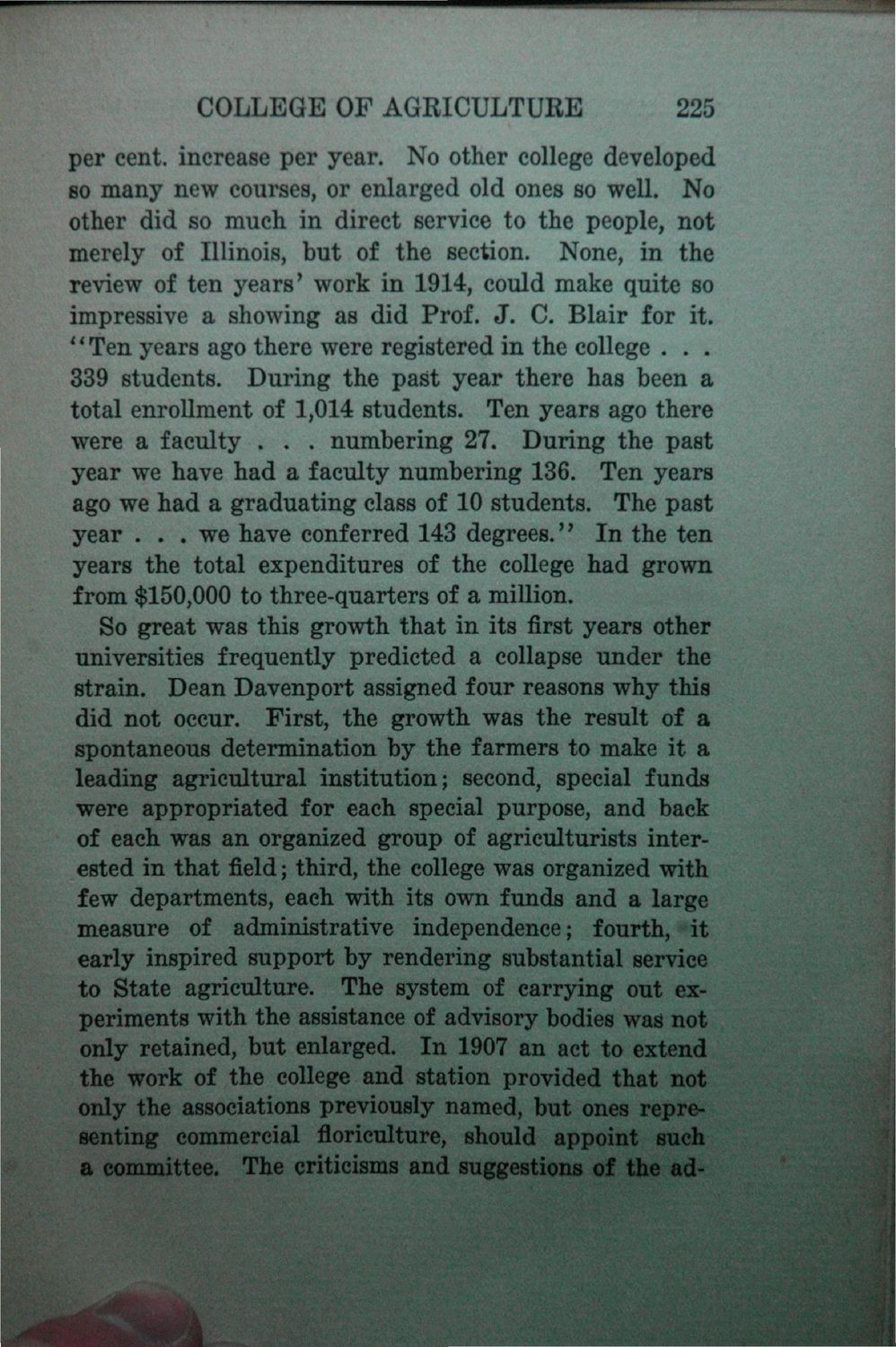| |
| |
Caption: Book - History of the University (Nevins)
This is a reduced-resolution page image for fast online browsing.

EXTRACTED TEXT FROM PAGE:
COLLEGE OF AGRICULTURE 225 per cent, increase per year. No other college developed so many new courses, or enlarged old ones so well. No other did so much in direct service to the people, not merely of Illinois, but of the section. None, in the review of ten years' work in 1914, could make quite so impressive a showing as did Prof. J. C. Blair for it. "Ten years ago there were registered in the college . . . 339 students. During the past year there has been a total enrollment of 1,014 students. Ten years ago there were a faculty . . . numbering 27. During the past year we have had a faculty numbering 136. Ten years ago we had a graduating class of 10 students. The past year . . . we have conferred 143 degrees." In the ten years the total expenditures of the college had grown from $150,000 to three-quarters of a million. So great was this growth that in its first years other universities frequently predicted a collapse under the strain. Dean Davenport assigned four reasons why this did not occur. First, the growth was the result of a spontaneous determination by the farmers to make it a leading agricultural institution; second, special funds were appropriated for each special purpose, and back of each was an organized group of agriculturists interested in that field; third, the college was organized with few departments, each with its own funds and a large measure of administrative independence; fourth, *it early inspired support by rendering substantial service to State agriculture. The system of carrying out experiments with the assistance of advisory bodies was not only retained, but enlarged. In 1907 an act to extend the work of the college and station provided that not only the associations previously named, but ones representing commercial floriculture, should appoint such a committee. The criticisms and suggestions of the ad-
| |